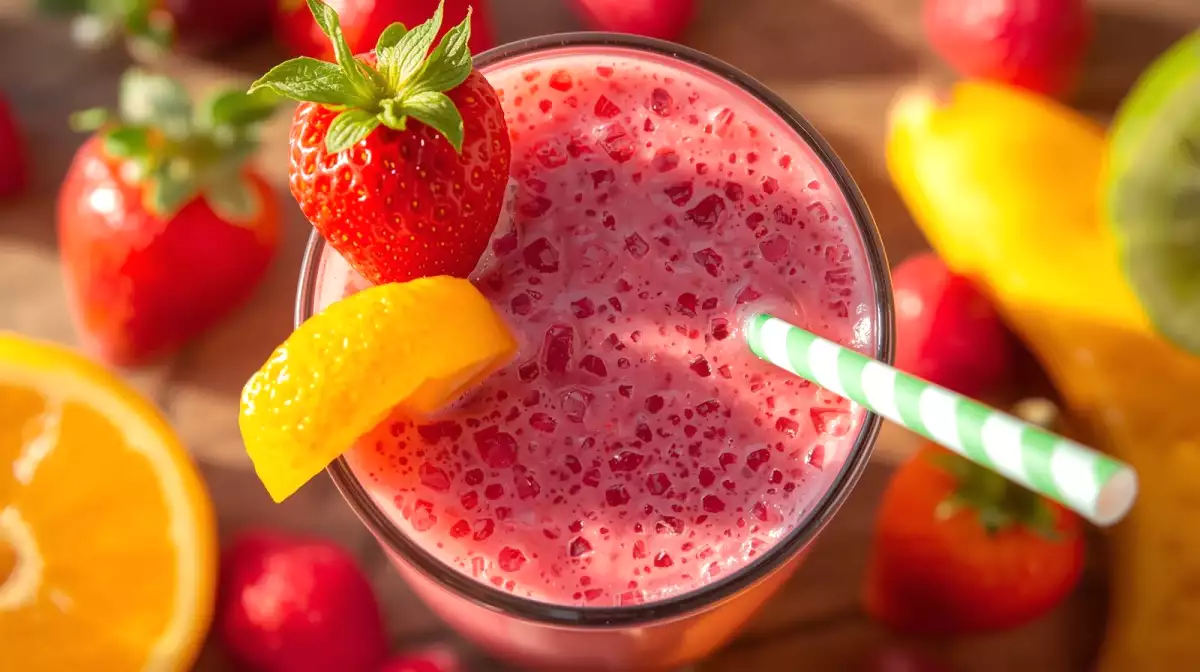Do you drink smoothies every day? Here's what your blender is really doing to your vitamins

They're colorful, fresh, full of vitamins and right on trend: smoothies have it all. But behind their "healthy" appearance, one question often comes up: does blending fruits and vegetables destroy their nutrients?
Some say the blender "kills" the vitamins. Others swear there's nothing to worry about. As is often the case, the truth lies somewhere in between...
Blending is not cooking (and thankfully so!)
Good news: no, the blender doesn't "cook" your fruit.
Unlike prolonged cooking, blending does not reach temperatures capable of degrading most nutrients. Even after a minute in the bowl, the temperature generally does not exceed 40°C.
And at this level, most vitamins remain intact.
So why the bad reputation?
Because blending alters the structure of food, and therefore the way in which nutrients are exposed to air, light and heat. This is where certain losses can occur - but they often remain limited.
What the blender really changes
Blending is a bit like "pre-digesting" fruit and vegetables: the blades break down the fibers, releasing the juice, water, pigments and micro-nutrients.
This has two consequences:
- On the one hand, nutrients become more accessible to digestion (good news!).
- On the other, they oxidize more quickly in contact with air (slightly less good news).
Vitamin C in particular suffers the most. Highly sensitive to heat, light and oxygen, it begins to degrade as soon as the fruit is cut or blended.
But the process is gradual: in the first two hours, losses remain low (around 10-15% according to studies).
Polyphenols and carotenoids (found in red fruits, carrots and mangoes) are also sensitive to oxidation, but their degradation remains minimal if the smoothie is consumed quickly.
What about fibre?
This is one of the great advantages of smoothies over juices: the fibers are still there!
The blender crushes them, but doesn't eliminate them. So you retain their beneficial effect on satiety, digestion and blood sugar control.
But beware: crushed fibers lose some of their "structure". As a result, the fruit's sugar is absorbed more quickly, which can raise blood sugar levels (especially if you add honey, milk or very sweet fruit).
Clearly, a homemade smoothie is still much better than an industrial juice, but it must remain balanced - not turned into a liquid dessert.
The real cause of losses: time
It's not so much the blender as the time you wait after blending that causes nutrients to be lost.
The longer you let your smoothie stand, the more vitamins and antioxidants oxidize.
After 24 hours, some water-soluble vitamins (notably C and B9) can drop by 30-50%.
The reflex to adopt: prepare, pour, drink!
Your smoothie is at its richest within half an hour of preparation.
If you need to transport it, keep it cool and in an opaque, well-closed container.
Tips for maximum nutrient preservation
Here are a few good "smoothie lover" reflexes:
Choose ripe, fresh fruit.
The richer they are in nutrients, the less impact the blender will have.
Blend in short bursts.
Avoid running the blender for too long: the less it heats up, the better.
Add a touch of acidity.
Lemon or orange juice limits vitamin C oxidation and prolongs freshness.
Consume quickly.
A smoothie is meant to be drunk within the hour. Not to wait in the fridge until the next day.
Choose glass over plastic.
Glass limits chemical interactions and retains the properties of the blend better.
Go for green!
Leafy vegetables (spinach, kale, parsley...) add antioxidants and minerals that are highly resistant to oxidation.
In a nutshell
Blending does not eliminate nutrients, but accelerates their oxidation.
The most fragile vitamins (such as C) lose some of their effectiveness over time.
Fiber is preserved, but its structure changes slightly.
For a smoothie at its best: fresh, fast, balanced - and, above all, drunk without delay!
 Adèle Peyches
Adèle Peyches
Comments